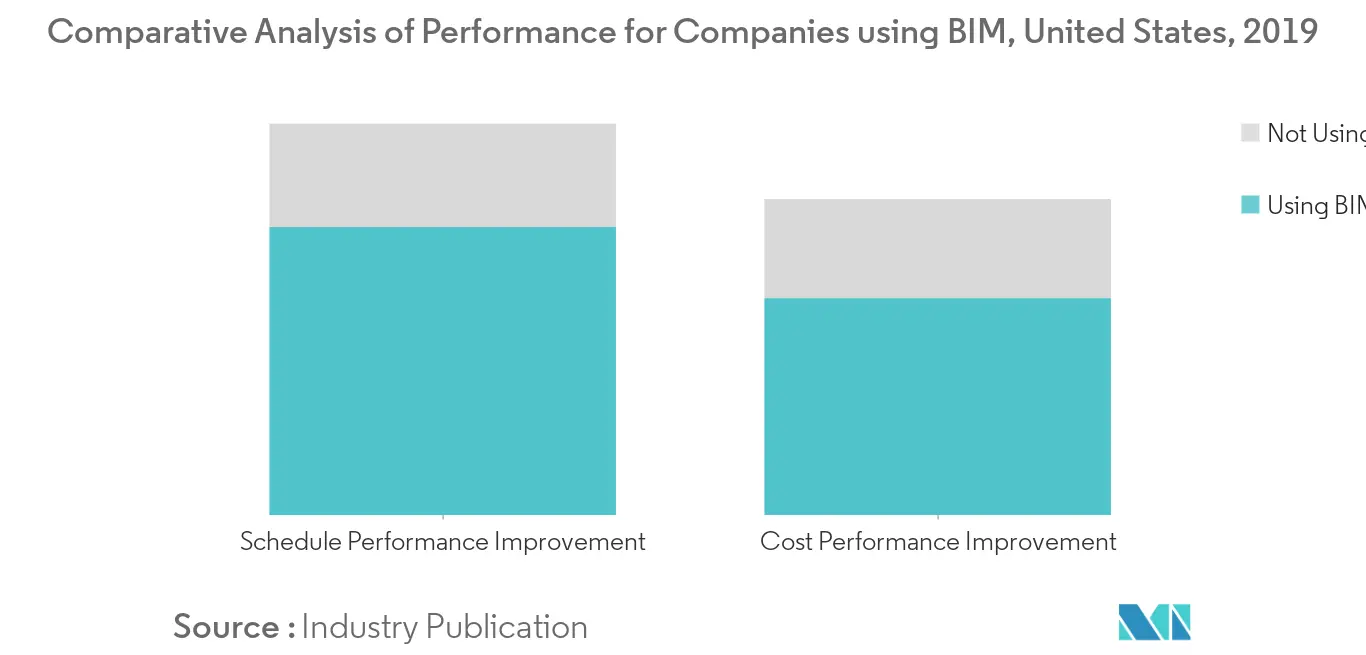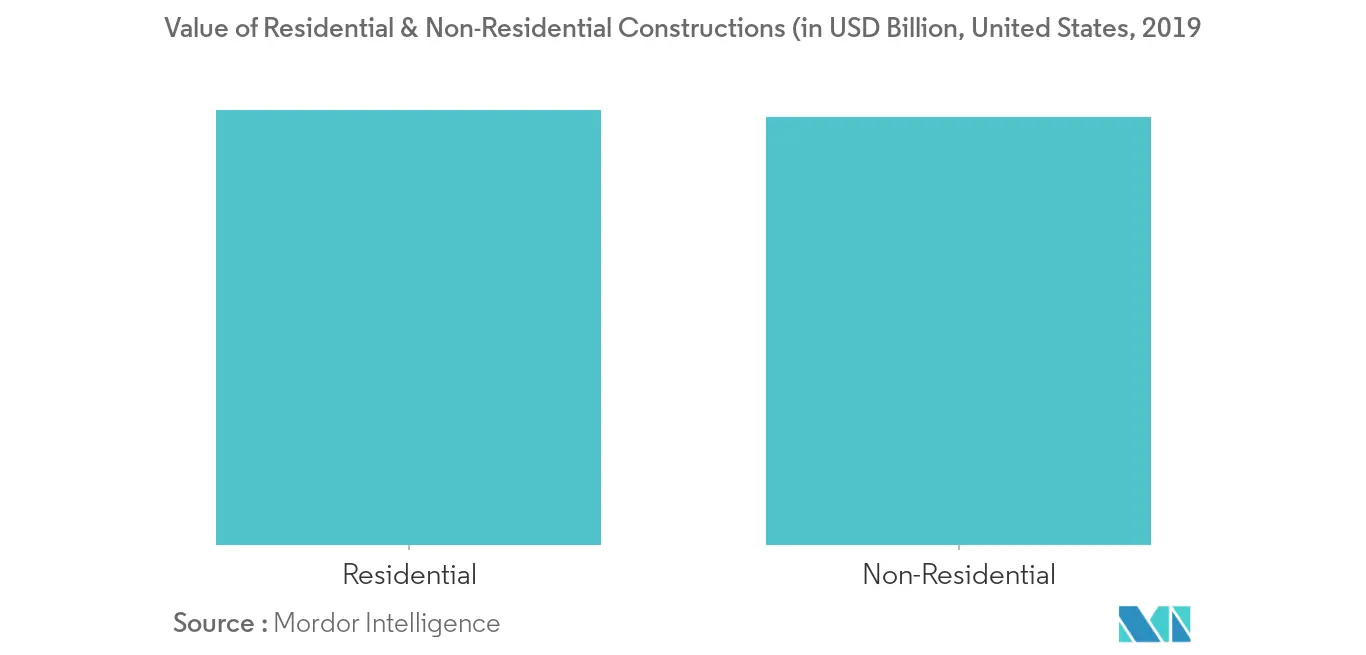Market Trends of US Prefabricated Buildings Industry
This section covers the major market trends shaping the US Prefabricated Buildings Market according to our research experts:
The Trend of BIM in the Prefab Sector
According to an industry report on the advantages of BIM in the prefab and modular construction, in the prefab industry, around 22% of the companies not using BIM claim that they experience schedule performance improvement whereas the companies that use BIM in more than half of their projects, a significant 61% claim improvement in the performance. On similar lines, with modular construction, only 21% of non-BIM users cite cost-performance improvement whereas 46% of the BIM users report cost-performance improvement. An increase in project quality, a decrease in the construction costs, and improvement in the project schedule performance are the three main benefits of using BIM. The use of BIM is increasingly seen common in commercial and institutional projects in the USA.

Growth in Residential & Non-Residential Sector to Boost the Prefab Share in the Market
Modular construction technology has been gaining more attention in the building industry over the last few years in the USA. Faced with rising housing costs, cities are beginning to invest in the modular and prefab construction to deliver multifamily residential developments. There were approximately 1.29 million new privately-owned housing units starts in the United States in 2019. This number has seen a rise in the past few years continuously owing to the demand for housing.
Based on planned construction development over the next few years, non-residential construction put in place is expected to reach 590.4 billion U.S. dollars in 2023 in the United States. which includes segments like lodging, office, commercial, health care, and education. Non-residential construction will continue to improve if government spending continues to improve allowing communities to contribute more resources to infrastructure.
Within the non-residential building industry, the commercial building has experienced a comfortable growth over recent years. However, the construction industry faces challenges such as a shortage of skilled labor and rising material costs due to global trade wars. The modernization of a generally typically conservative industry will be important in the near future to support customer demands as well as to improve operation models.
Integrating sustainable building processes and features in projects as well as establishing technological advancements like building information modelling (BIM) will be essential for the future of the construction industry. The value of the new residential construction that is put in place in the U.S is projected to be around USD 600 billion by the year 2025.
With the increase in concern over the carbon emissions, green buildings concept is on a rise and prefab modular construction is expected to seen a much growth during the forecast period.

